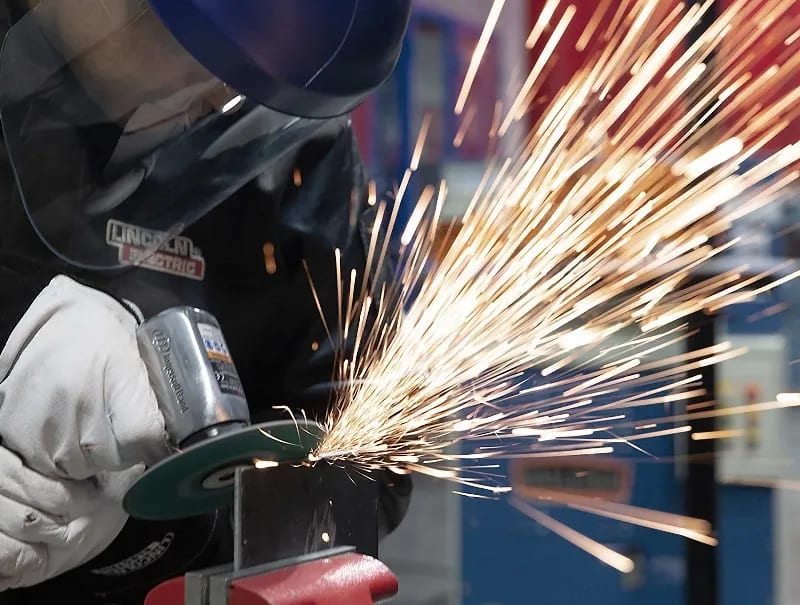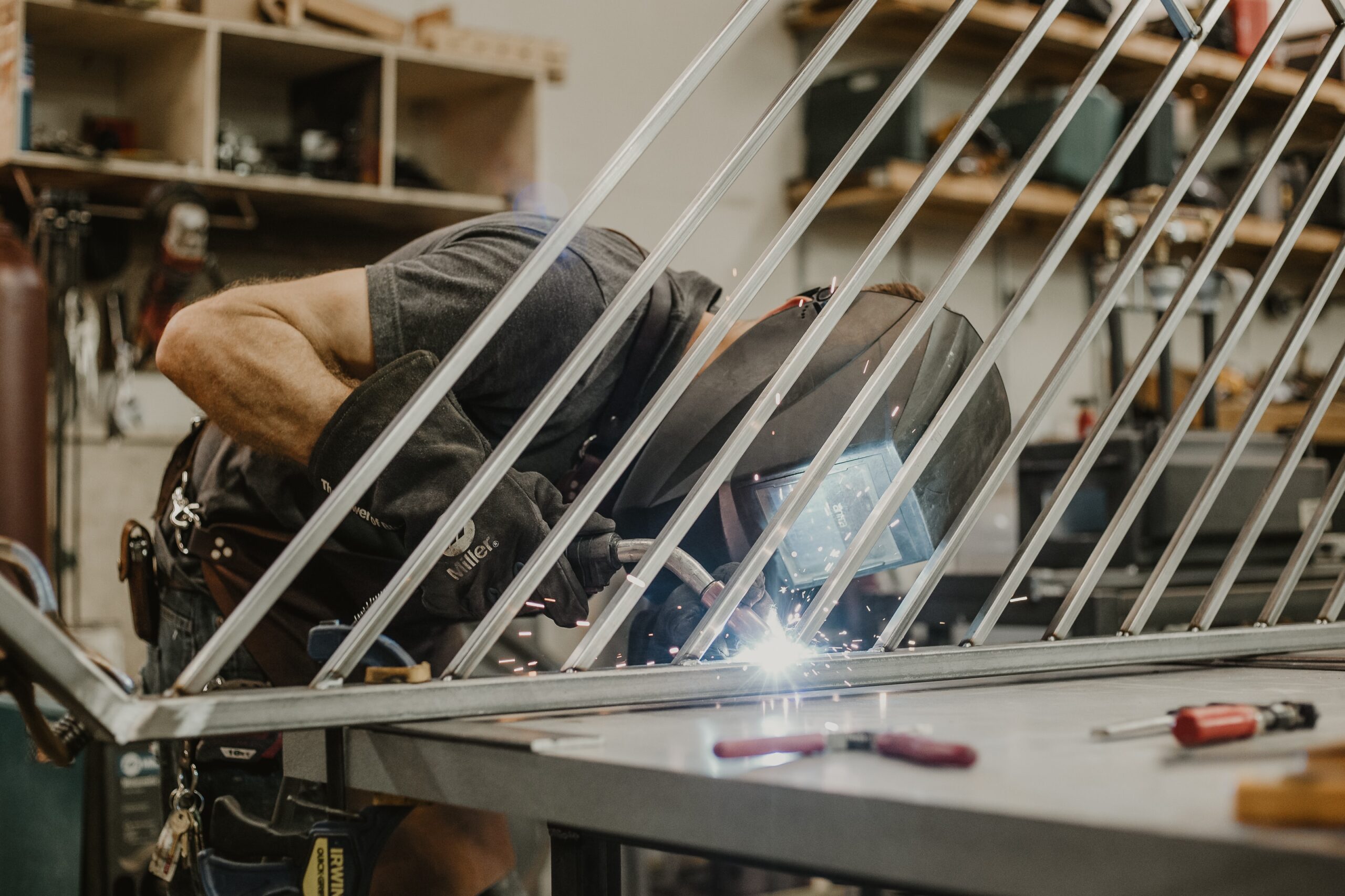Everything about Welding: Secret Insights Into Techniques and Best Practices for Success
Welding incorporates a range of techniques, each suited for particular materials and applications. Comprehending these methods, such as GMAW, SMAW, and TIG, is vital for attaining ideal results. Additionally, the right tools and security methods can not be ignored. As preparation and troubleshooting play vital functions in the welding process, grasping these aspects can greatly improve the high quality of the final product. What are the essential factors that guarantee an effective weld?
Recognizing Different Welding Methods
Welding techniques incorporate a variety of approaches, each matched to particular applications and materials. Among the most usual techniques are Gas Steel Arc Welding (GMAW), Protected Steel Arc Welding (SMAW), and Tungsten Inert Gas Welding (TIG) GMAW, likewise referred to as MIG welding, is preferred for its rate and convenience, making it suitable for slim products. SMAW, or stick welding, is favored for its simplicity and performance in exterior atmospheres, particularly with thicker steels. TIG welding offers precision and control, making it suitable for detailed job and non-ferrous steels (Welding). Each technique has its special advantages and factors to consider, permitting welders to pick the most effective approach based upon the project's needs, material type, and preferred outcomes. Recognizing these techniques is crucial for successful welding
Crucial Welding Equipment and Devices
While different welding methods need particular skills, the appropriate devices and tools are similarly necessary for attaining quality results. Crucial welding tools consists of welding makers, which differ depending on the method-- such as MIG, TIG, or stick welding. Protective gear, consisting of aprons, safety helmets, and gloves, warranties safety and comfort throughout the procedure. In addition, components and clamps assist safeguard products in place, ensuring precision in welds. Consumables like welding rods, wire, and protecting gas are additionally critical components that influence the quality of the weld. Tools such as cutters and grinders assist in surface preparation and post-weld finishing, adding to an expert outcome. Buying top quality tools ultimately enhances the efficiency and effectiveness of welding tasks.
Safety Practices in Welding
Correct security practices are crucial in the welding sector to safeguard workers from potential dangers. Welders must put on appropriate personal safety tools (PPE), consisting of helmets with correct shading, gloves, and flame-resistant garments. Adequate air flow is essential to decrease exposure to harmful fumes and gases produced throughout the welding process. Furthermore, employees ought to be learnt the proper handling of welding tools to stop mishaps. Fire security procedures, such as maintaining combustible materials away from the welding location and having fire extinguishers easily available, are essential. Routine examinations of devices and work areas can help recognize potential dangers prior to they lead to accidents. By adhering to these security methods, welders can develop a more secure working environment and minimize risks related to their trade.
Preparing Materials for Welding
Preparing materials for welding is a vital action that considerably affects the top quality and integrity of the last item (Belgrade Welding). Correct prep work entails cleaning the surfaces to get rid of pollutants such as corrosion, dirt, and oil, which can endanger the weld. Techniques such as grinding, sanding, or making use of solvents are generally employed to achieve a clean surface area. Furthermore, ensuring that the products mesh well is vital; spaces can cause weak welds. It's additionally crucial to take right into account the positioning and positioning of the elements, as this will certainly impact the ease of welding and the last outcome. Selecting the appropriate filler material and ensuring compatibility with the base metals is essential for accomplishing strong, long lasting welds.
Tips for Getting High-Quality Welds
Attaining high-quality welds needs interest to detail and adherence to best practices throughout the welding process. Proper joint prep work is vital, making sure surface areas are cost-free and clean from pollutants. Picking the appropriate filler product and welding technique based on the base metals is essential for optimal bonding. Preserving regular traveling rate and angle while welding can advertise and stop flaws harmony. In addition, regulating warmth input is vital; extreme warm can cause bending and weakened joints. If required, on a regular basis evaluating the welds throughout the procedure enables for prompt changes. Ultimately, using proper post-weld treatments, such as cleansing and tension alleviation, can boost the resilience and honesty of the weld, ultimately making sure a successful end result.
Troubleshooting Usual Welding Issues
Welding frequently offers challenges that can affect the quality and stability of the end product. Usual issues such as porosity, inconsistent weld grains, and overheating can emerge, each requiring certain repairing methods. Understanding these troubles is crucial for welders to enhance their abilities and attain perfect outcomes.
Porosity Troubles Discussed
Although porosity can commonly be forgotten, it continues to be an essential problem in welding that can jeopardize the honesty of a finished item. Porosity refers to the presence of tiny gas pockets within the weld grain, which can lead and weaken the joint to early failing. This problem usually emerges from pollutants, wetness, or improper shielding gas protection throughout the welding procedure. To minimize porosity, welders should confirm that the base products are clean and dry, utilize suitable securing gases, and preserve constant welding specifications. Regularly examining the devices and setting can also help identify prospective concerns prior to they materialize in the weld. Addressing porosity efficiently is necessary for attaining strong, long lasting welds that satisfy high quality standards.

Irregular Weld Beads
Irregular weld grains can greatly influence the top quality and toughness of a finished product. Different aspects add to this problem, consisting of improper travel speed, wrong amperage settings, and inconsistent electrode angles. When the welder relocates also quickly, a bead might appear narrow and lack penetration, while relocating too gradually can create excessive buildup. Furthermore, utilizing the incorrect amperage can cause either undercutting or extreme spatter, both of which concession weld integrity. The welder's strategy, such as inconsistent torch activity, can also cause uneven bead look. To minimize these issues, welders should concentrate on maintaining constant, controlled movements and making certain appropriate tools settings to achieve uniformity in their welds. Consistency is essential to attaining strong and reliable welds.
Overheating and Bending Issues
Too much heat during the welding procedure can result in considerable getting too hot and deforming issues, impacting the architectural stability of the work surface. These troubles typically show up as distortion, which can compromise positioning and fit-up, making additional assembly challenging. Variables this contributing to overheating consist of the option of welding parameters, such as voltage and travel rate, as well as the kind of material being bonded. To alleviate ac welding these issues, welders should keep constant travel speed and suitable warmth input while keeping track of the work surface temperature. In addition, preheating or post-weld heat therapy can assist ease anxieties caused by rapid cooling - Welding. Normal evaluation and adherence to ideal practices are necessary in preventing overheating and making certain the longevity and dependability of bonded structures
Regularly Asked Inquiries
What Are the Occupation Opportunities in the Welding Market?
The welding industry offers varied profession chances, consisting of settings as welders, inspectors, engineers, and teachers. Specialists can operate in production, building, aerospace, and automotive markets, profiting from strong demand and competitive incomes in different roles.
Exactly How Can I Boost My Welding Rate Without Compromising High Quality?
To enhance welding speed without compromising high quality, one need to exercise efficient techniques, maintain tools, optimize setups, and enhance hand-eye sychronisation. Routine training and seeking comments can also significantly add to accomplishing quicker, high-grade welds.
What Accreditations Are Available for Welders?
Countless certifications exist for welders, including those from the American Welding Society (AWS), the National Facility for Construction Education and Study (NCCER), and numerous industry-specific organizations. These qualifications improve employability and show skill efficiency.
Exactly How Does Welding Influence the Characteristics of Metals?
Welding influences the buildings of metals by altering their microstructure, which can bring about adjustments in ductility, hardness, and toughness. Warmth input and air conditioning prices during the process significantly impact these material characteristics.
Can I Bonded Dissimilar Metals With Each Other?

Comments on “Correcting cracking in welded joints: tips from Montana Mobile Welding and Repair Fabrication”